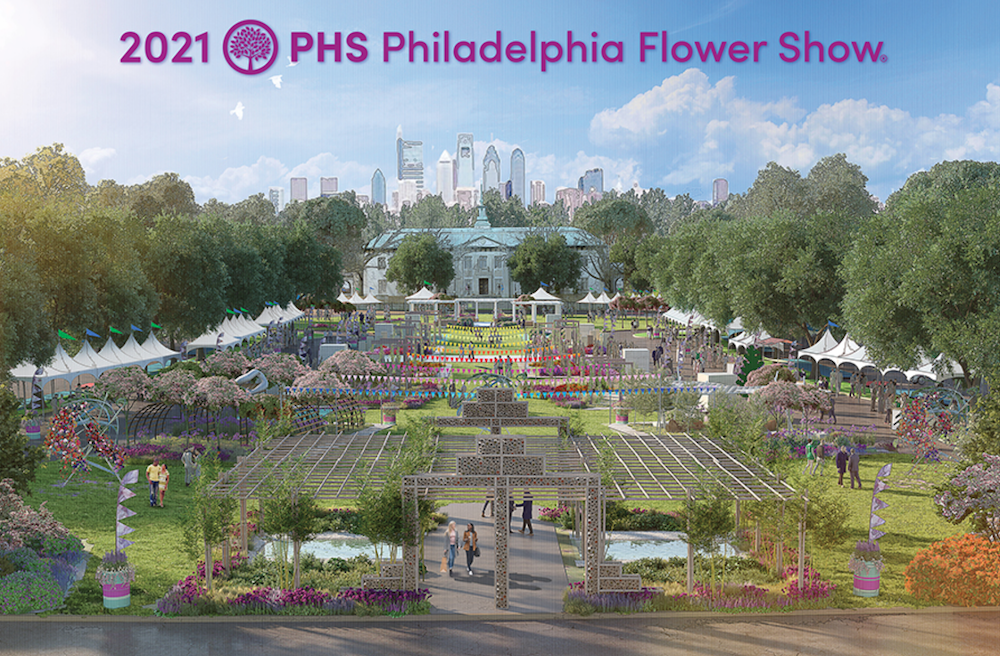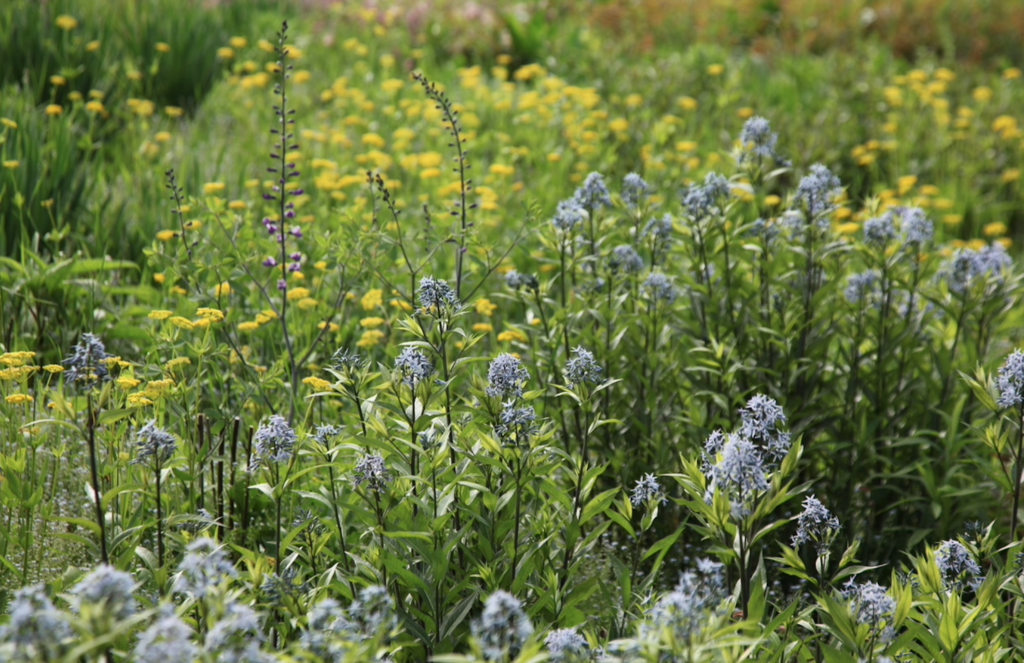Designer of NYC High Line Will Exhibit at Philadelphia Flower Show
By Jill Brooke

Considering that Philadelphia was the epicenter for botany during the United States’ early growth, it is not all that surprising that a New York treasure and knowledgeable botanist, gardener and lecturer would be venturing to Pennsylvania to participate in the largest and world’s longest-running horticultural event.
Patrick Cullina is an award-winning landscape designer, horticultural consultant and photographer with a diverse portfolio of commissions across the country. That’s putting it mildly.
Among his many credits, he formerly served as Vice President of both Brooklyn Botanic Garden and Friends of the High Line – which to any New Yorker means they are thanking Patrick most days since he created garden vistas in contrast to the concrete and train tracks – and as Associate Director of the Rutgers University Gardens.
Clearly, he is not a florist. But the pandemic has opened an opportunity for landscape designers to also be stars at the Philadelphia Flower Show.
For the first time in its 193-year history, the Philadelphia Flower Show is not taking place in February indoors but at an outside venue of FDR Park, which was designed by Frederick Law Olmstead. This gives a new opportunity for landscape designers to showcase their artistry. As a result, the show has been reimagined and will feature the most designers, gardens and floral displays in the show’s history with over 75 installations in a canvas that is 45% larger than space indoors at the Philadelphia Convention Center.
So what will Patrick do? What can people expect to see? I will let Patrick speak in his words and promise to report on it when I visit the opening this Friday.

This year, the Pennsylvania Horticultural Society has selected Habitat as its theme and has recast its flower show concept as an outdoor event in a large urban park in Philadelphia.
In that spirit, this exhibit seeks to emphasize the full meaning of “flowers” in the landscape — from the more often considered blooms on the ground plane to the less remarked but crucial flowers of woody plants like the oaks featured here. The re-invention of nature, in this case, is an attempt to challenge perceptions of the potential for nature to thrive within built urban environments.
It hopes to serve as a reminder that the constructed elements of any community do not necessarily prevent it from being ecologically productive. Cities can either support or deter the dynamic forces that drive living landscapes — this is a choice that we can make when we plan, design and build.
But any walk along any street reveals the irrepressible nature of plants as they exploit any niche or gap to create habitats that are cues to achieving more livable communities. Platforms for ecological function can be developed practically anywhere – we simply need to maintain a determination to blend ingenuity with sympathy for the human experience and to prioritize the way communities can be elevated through design.
This exhibit seeks to explore the wild side of urban life with bold foliage and textures. Everything within it is either eligible for reuse, including within Philadelphia, or has been repurposed and will remain eligible to play yet another architectural role in the future.
Outside the structure is a mix of regionally native trees — large specimens interspersed with a variety of important younger species, including an array of oaks that collectively serve as our most important arboreal supporter of pollinators, arranged in a successional pattern to signify a durable future urban canopy.
Within the structure, the outsized foliage of North American bigeaf magnolias frame a wild courtyard of grasses and flowering perennials punctuated by small trees and gathered around a water feature.
The structure itself is meant to suggest the ways nature reveals its power by sometimes overtaking buildings intended to keep it at bay — a nod to the exuberant power of plants. On one axis, it permits visitors to pass through the scene; on the other, there are opportunities to enter part of the way to pause for views.
In the end, the exhibit hopes to advocate for the roles a diverse palette of plants can play in improving and reenergizing our cities. Flowers are compelling ornamental objects – yes. But more importantly, they offer pollen or nectar to insects and birds, or become food for wildlife and humans alike as they become fruits or seeds. Foliage, roots and limbs play their roles as well — they improve air quality, filter runoff and serve as habitat. Versions of the way plants exceed simple ornamentation occur around us every day—and expanding opportunities for these dynamic processes to thrive is easily within reach.”

See I told you how much effort goes into landscape design just as it does for floral design. Looking forward to dissecting all the details that will go into these designs and share them with you soon.
Jill Brooke is a former CNN correspondent, Post columnist and editor-in-chief of Avenue and Travel Savvy magazine. She is an author and the editorial director of FPD and floral editor for aspire design and home magazine
